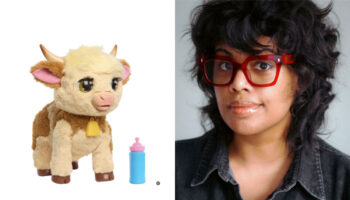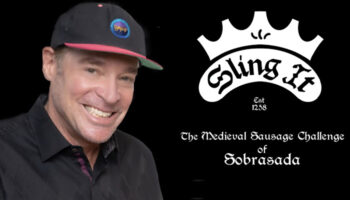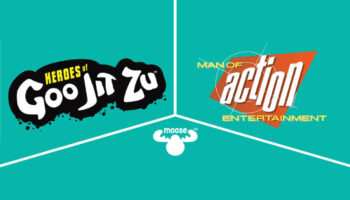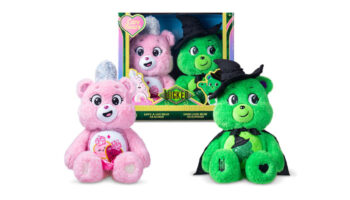What should you put in a sell sheet and a sizzle? Hasbro’s Angus Walker shares his thoughts

Angus, thanks for making time. Ahead of the Mojo Pitch in June, I’m keen to hear your thoughts on sizzles and sell sheets. Let’s start with the latter! Some people think sell sheets are very old-fashioned. Others love them… Do you have a strong feeling either way?
Ha! You know, I never really thought of sell sheets as being old fashioned. I guess because we now live in a world where communication is so dynamic, I could see how a sell sheet might feel a wee bit underwhelming as a storytelling tool…
You don’t mind them yourself, though?
No, but – personally – I prefer videos, and we generally don’t, at Hasbro, take physical leave behinds at pitch meetings. If a sell sheet helps you convey the idea during the meeting, though, you should definitely use it… And please do include it along with a sizzle video and any other assets you upload to our submission portal after the meeting.
So use one if it helps in the pitch, and feel free to upload it to the portal… What information do you like to see on a sell sheet in a pitch, then?
Anything that helps distill a concept into an easy to grasp set of key benefits is a good thing. Creating a good sell sheet forces you to do just that. Think of it as a cheat sheet for your elevator pitch.
An excellent point! Just creating a sell sheet can help you make your pitch succinct – even if you never use it…
Right. And a picture speaks 1000 words, so images that show your vision are vital. It’s also important to frame up the ‘why, the how, and the what’… Why is this idea relevant? Why should a consumer want this? Once you’ve established the why, explain HOW the concept is unique from other ideas that may be out there already. How does the idea solve a particular pain point, and so on…

Then the what!
Yes. For me, once the why and the how are clearly articulated, it’s time to outline the functional aspects of the concept: ‘the what’. Also, what age group is it targeting? What’s the suggested retail price? What are the key features – and so on.
Brilliant. And speaking of ‘whats’… What tends to be the biggest mistake people make using a sell sheet?
Oh, focusing only on the ‘what’! It’s great to communicate all of the features of a toy or game, but don’t forget to frame up the reason for being. Context is everything. Taking a moment to set the stage before you dive into the details goes a long way.
And is there anything else I should ask you about this?!
I can’t think of anything, but… Do you have a strong feeling about sell sheets vs. Sizzle videos, Deej? Do tell! Inquiring minds want to know!
Do I have a view?! Oh, Billy, won’t thank you for getting me started! Ha!
Ha! Sorry, Billy…
Actually, I’ve done a couple of pieces on this, so maybe I’ll link to the one about sizzles here, and very basic sell sheets here… All I’ll say is that the mistake some inventors seem to make is to use the tool THEY want to use… And not the tool the publisher says they want to see!
Yes, that makes sense.

So some people are stuck with an almost biblical approach: “Do unto others as you would have them do unto you.” The golden rule! But actually, it doesn’t make as much sense as, “Do unto others as they would have you do unto them” – surely?!
Ha!
Because if I personally prefer to play a sizzle, but the publisher prefers me to describe it in person, why the heck would I insist on playing a sizzle?! Now, as it happens, you say you prefer videos yourself… So let’s talk about that. How do you define a sizzle video?
I’d define a sizzle as a short, standalone piece of video content that uses basic storytelling to convey the essence of a particular concept. It can be highly produced or very rough and homemade… In the end, it just needs to communicate an idea with or without the creator there to pitch it.
With or without the creator there! Noted. And if you had to tell me what – for you – an ideal sizzle looks like and shows, what would you say?
Similar to a good sell sheet, an ideal sizzle should tell the story of the why, the how, and the what behind an idea. Video allows for a lot more creativity in how you can tell that story, however. The best sizzles take advantage of the medium and not only tell the viewer the story but show it experientially.
You know I’m going to interrupt and ask for an example, don’t you?
I do! I’m ready for it… So, for example, seeing people playing a game and having an authentic, laugh-out-loud good time can speak volumes. Animations, voiceover and music add dimension to the sizzle, but don’t feel that you need to spend a fortune to make an impact.

No?
No, there’s no real need. Just try to make a piece that’s as compelling to watch as your toy or game is to play. Kickstarter pitch videos in the games vertical do a really great job of this kind of storytelling – although they tend to be a lot longer than I would recommend for sizzle video.
Which is how long?
Oh, 30 seconds to a minute is ideal; two minutes tops.
Perfect. In your experience, Angus, what traps do inventors tend to make when presenting a sizzle?
A good sizzle is a fine balance between a series of opposing objectives. It should be informative, but also entertaining. It should be brief, but you also have to convey a lot… It should feel professional, but also fun. So when a sizzle doesn’t quite hit the mark it’s usually because an inventor leans too far one way or another on one of those objectives. It happens to everyone at some point and it’s not the end of the world.
Oh! Good answer. And on a scale of zero to ten – with zero being none whatsoever and ten being absolute fervour, how much interest – for you – does a decent sizzle tend to generate for you?
That’s a bit of a tricky question! I love watching good videos, but while a great concept can be elevated by a good sizzle video, a great sizzle video can’t elevate a weak concept… The real magic happens when a truly great concept is supported by a truly great sizzle. When that occurs, I’m a solid ten on the fervour scale.
Excellent answer. Excellent! Alright, to wrap things up… What’s the one question? I could’ve asked you about these topics today but didn’t?
Hmmm… I guess you could’ve asked if we use the assets beyond the initial pitch meeting.
And what’s the answer?
If the concept is something we decide to bring back to share with the key stakeholders, the answer is yes… We depend on the sizzles quite a lot. The sizzle video becomes a vital part of the internal sell in. It’s for that reason that I said earlier that a sizzle needs to communicate an idea with or without the creator there to pitch it. When we bring a concept in, inventor, relations people have a responsibility to position the idea in the best possible light for success… Having a great video to work with always makes that job much easier.
Terrific! Thank you, as always, Angus, for your excellent insights. Wonderful stuff.
–
To stay in the loop with the latest news, interviews and features from the world of toy and game design, sign up to our weekly newsletter here























